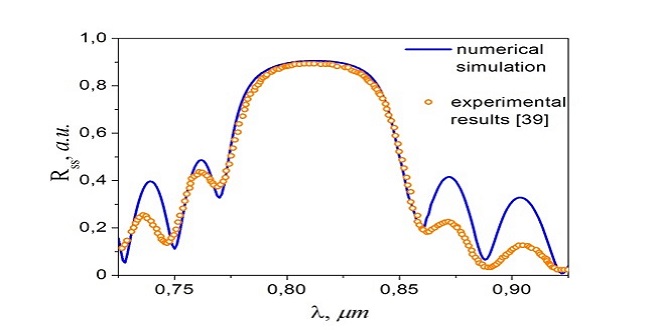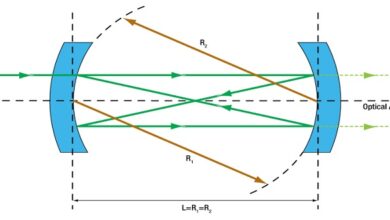Propagation in Anisotropic Media

To this point, we have considered only isotropic media where the susceptibility χ(ω) (and hence the index of refraction) is the same for all propagation directions and polarizations. In anisotropic materials, such as crystals, it is possible for light to experience a different index of refraction depending on the alignment of the electric field E (i.e. polarization).
This difference in the index of refraction occurs when the direction and strength of the induced dipoles depend on the lattice structure of the material in addition to the propagating field. The unique properties of anisotropic materials make them important elements in many optical systems.
We discuss how to connect E and P in anisotropic media using a susceptibility tensor. In section, we apply Maxwell’s equations to a plane wave traveling in a crystal. The analysis leads to Fresnel’s equation, which relates the components of the k-vector to the components of the susceptibility tensor. We apply Fresnel’s equation to a uniaxial crystal (e.g. quartz, sapphire) where χx = χy 6= χz. In the context of a uniaxial crystal, we show that the Poynting vector and the k-vector are generally not parallel.
More than a century before Fresnel, Christian Huygens successfully described birefringence in crystals using the idea of elliptical wavelets. His method gives the direction of the Poynting vector associated with the extraordinary ray in a crystal. It was Huygens who coined the term ‘extraordinary’ since one of the rays in a birefringent material appeared not to obey Snell’s law. Actually, the k-vector always obeys Snell’s law, but in a crystal, the k-vector points in a different direction than the Poynting vector, which delivers the energy seen by an observer. Huygens’ approach is outlined in Appendix 5.D.
Constitutive Relation in Crystals
The matrix in (5.1) is called the susceptibility tensor. To visualize the behavior Figure 5.1 A physical model of an electron bound in a crystal lattice with the coordinate system specially chosen along the principal axes so that the susceptibility tensor takes on a simple form. of electrons in such a material, we imagine each electron bound as though by tiny springs with different strengths in different dimensions to represent the anisotropy.
When an external electric field is applied, the electron experiences a force that moves it from its equilibrium position. The ‘springs’ (actually the electric force from ions bound in the crystal lattice) exert a restoring force, but the restoring force is not equal in all directions—the electron tends to move more along the dimension of the weaker spring. The displaced electron creates a microscopic dipole, but the asymmetric restoring force causes P to be in a direction different than E as depicted.
Plane Wave Propagation in Crystals
We immediately notice the following peculiarity: From its definition, the Pointing vector S ≡ E×B/µ0 is perpendicular to both E and B, and by (5.6) the k-vector is perpendicular to B. However, by (5.5) the k-vector is not necessarily perpendicular to E, since in general k·E 6= 0 if P points in a direction other than E. Therefore, k and S are not necessarily parallel in a crystal. In other words, the flow of energy and the direction of the phase-front propagation can be different in anisotropic media.
This relationship is unwieldy because of the mix of electric field components that appear in the expression. This was not a problem when we investigated isotropic materials for which the k-vector is perpendicular to E, making the right-hand side of the equations zero. However, there is a trick for dealing with this.
Biaxial and Uniaxial Crystals
All anisotropic crystals have certain special propagation directions where the two values for n from Fresnel’s equation are equal. These directions are referred to as the optic axes of the crystal.
Last word
The optic axes do not necessarily coincide with the principal axes xˆ, yˆ, and zˆ. When propagation is along an optic axis, all polarization components experience the same index of refraction. If the values of nx , ny , and nz are all unique, a crystal will have two optic axes, and hence is referred to as a biaxial crystal.




